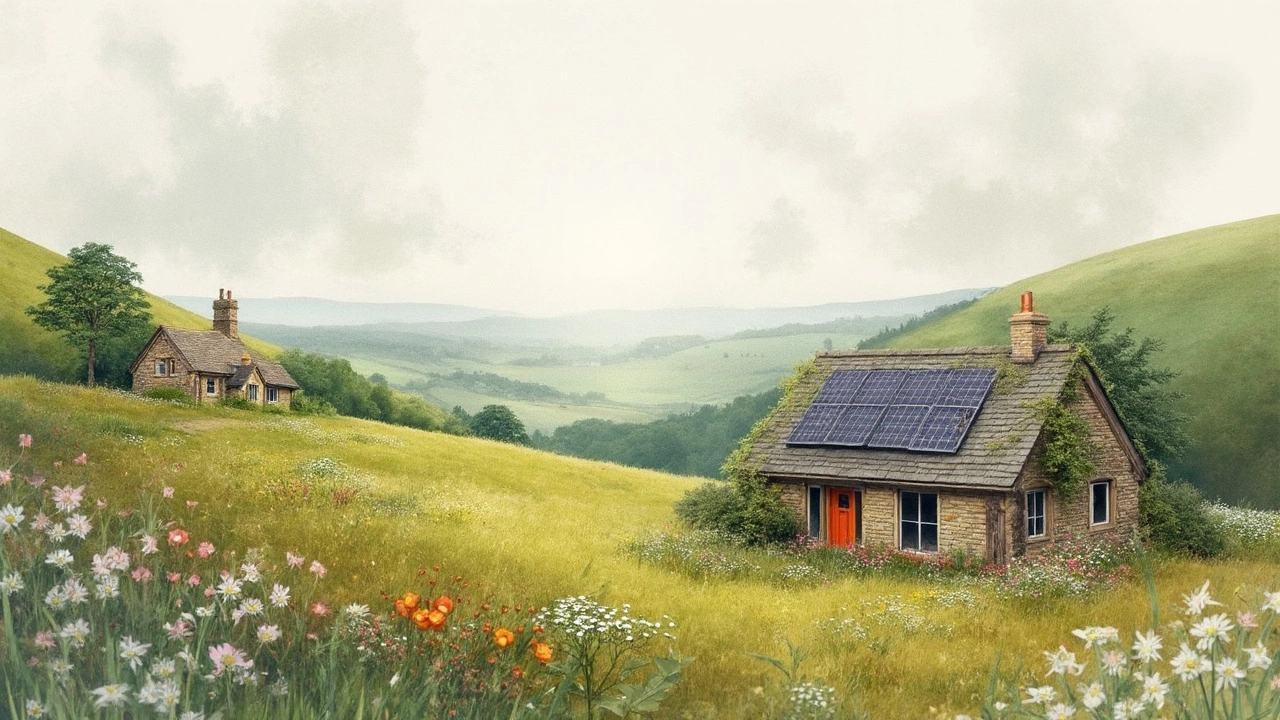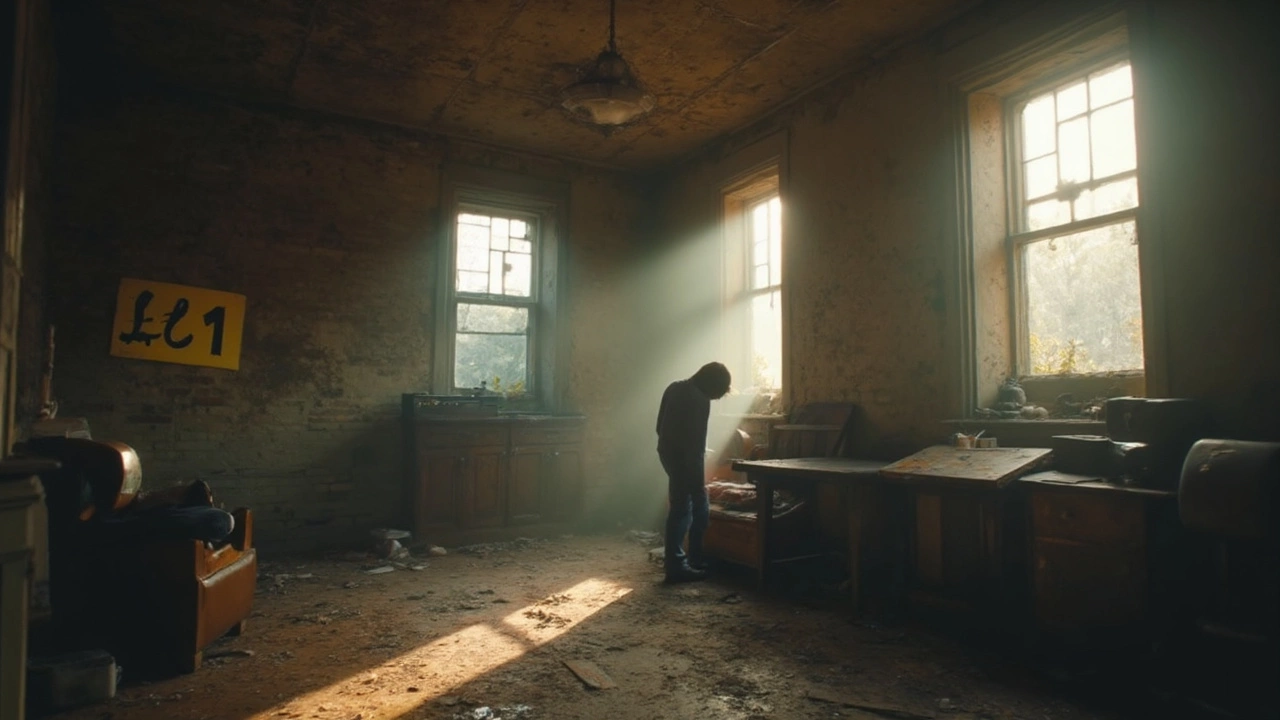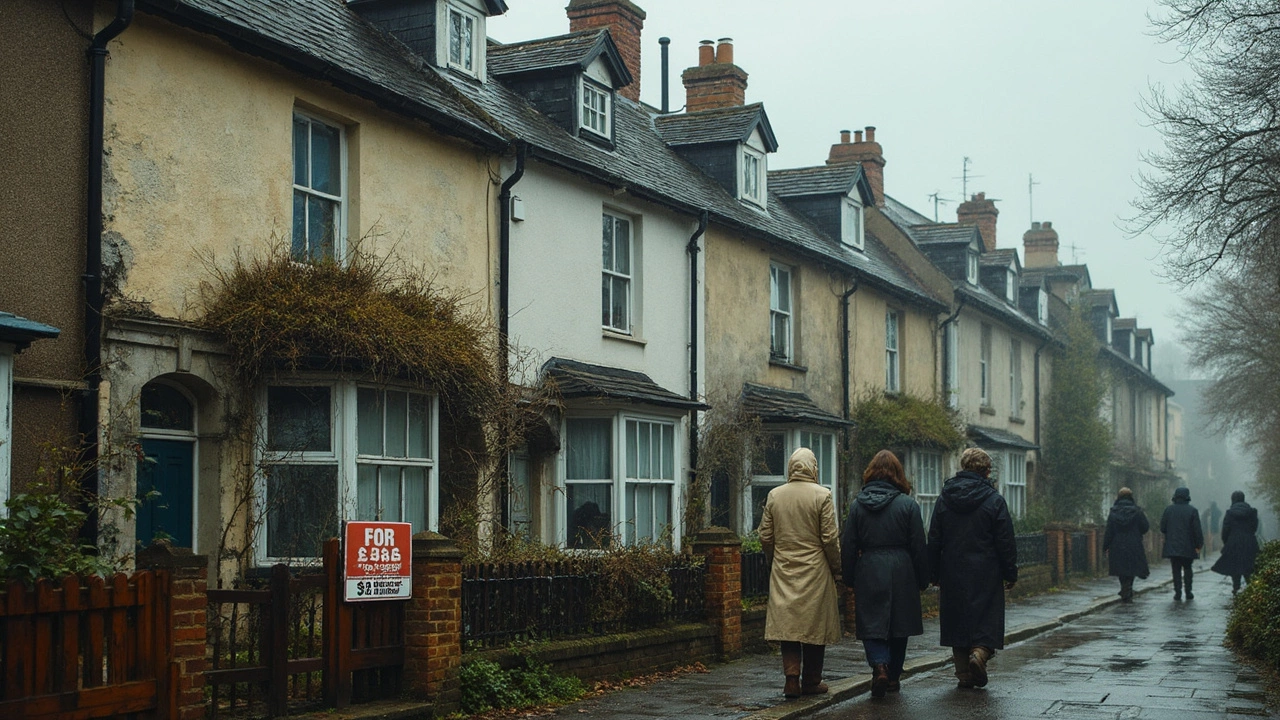If you think home buying means six-figure price tags and lifelong debt, think again. There are places where you can buy a whole house for less than you’d pay for a used car. Some homes go for a few thousand bucks—yes, really. Sure, there are trade-offs, but if your budget is tight, these bargains can be a real game-changer.
Here’s the thing: the cheapest houses aren’t always what you picture. They come in all shapes—tiny homes, buildings that need work, even old sheds turned cozy. Some towns with shrinking populations sell houses for less than a month’s rent in a big city. Sound crazy? It’s totally real, and it’s happening right now.
- How Cheap Can a House Get—Really?
- Tiny Homes, Shed Houses, and Unusual Solutions
- Where to Find Cheap Houses for Sale
- Hidden Costs You Shouldn’t Ignore
- Tips for Snagging a True Bargain
How Cheap Can a House Get—Really?
The search for the cheapest house turns up some pretty wild results. You might scroll Zillow and spot entire houses listed for under $20,000—and sometimes even under $10,000, mostly in places you’ve maybe never heard of like Detroit, Michigan or Gary, Indiana. These listings aren’t a glitch, either. Some are foreclosures, others get listed this low in areas where property demand has totally crashed.
If we're talking about the lowest sticker prices, “Dollar homes” really exist. In some U.S. cities, you can snag a house for one dollar. The catch? These are often city-owned properties that need major repairs, and you’ll have to prove you’ll fix them up. The $1 house deals are part of programs meant to revive struggling neighborhoods, so buyers can’t just flip and leave.
Looking worldwide, you’ve probably seen the “€1 home” headlines from small towns in Italy. Yes, you can buy a house in the Italian countryside for about a buck—but you’ll sign a contract to fix the property and sometimes even put down a deposit to make sure you stick to your word. These deals target folks who are cool with renovations in exchange for a fresh start in a sleepy village.
Of course, going cheap often means giving up on things like move-in-ready spaces, modern bathrooms, or even basic utilities. Want something a little more livable? Tiny homes and prefab sheds can run as low as $5,000 to $20,000 for basic shells, but you’ll still need to cover land and hookup costs. Some rural towns have houses for sale for less than the average annual rent payment in big cities—but jobs and services can be limited.
| Location | Type | Low-End Price |
|---|---|---|
| Detroit, MI (US) | Foreclosure Homes | $5,000 |
| Gary, IN (US) | Fixer-Uppers | $7,000 |
| Sambuca, Italy | €1 Homes | $1.08* |
| Rural Japan | Akiya (Empty Homes) | Free–$10,000 |
*Actual exchange rates vary.
The bottom line—if you’re serious and have some sweat equity to offer, you can find cheap houses for sale all over the map. Just be ready to tackle some major work, and read those fine print deals twice. There’s cheap, and then there’s “cheap but comes with homework.”
Tiny Homes, Shed Houses, and Unusual Solutions
This is where things get interesting. When most people hear "cheapest house," they probably don’t picture a professional looking, cute mini home parked in somebody’s backyard—but those are real options! Tiny homes have exploded in popularity because you can often build or buy one for $10,000–$30,000, all-in. That includes wiring, basic plumbing, and all the walls you need. Some folks manage to do it for even less, especially if they DIY or use recycled materials.
Shed houses are even cheaper. You’ve probably seen those 200-square-foot sheds at hardware stores for less than $5,000. People buy them, add insulation, electricity, and a bathroom, and boom—it’s a house. You still have to check zoning rules—some places won’t let you live in what was originally a shed, so double-check that before grabbing your wallet.
If you really want to go off the beaten path, there are options like converted buses or shipping containers. A used shipping container, fully converted to basic living standards, might set you back $20,000–$40,000. Buses can be as cheap as a few thousand dollars, if you’re handy and okay with a thrift-store vibe.
Here’s a quick breakdown to compare costs of these affordable housing solutions:
| Type | Starting Price | Common Square Footage |
|---|---|---|
| Tiny Home | $10,000 | 100–400 sq ft |
| Shed House Conversion | $5,000 | 80–200 sq ft |
| Shipping Container Home | $20,000 | 160–320 sq ft |
| Bus/RV Conversion | $7,000 | 100–300 sq ft |
For a lot of people, these unusual homes make cheap houses for sale look downright expensive. But you do give up space and probably a bit of comfort. Living small takes some adjustment, but it can also mean ditching a mortgage, lower bills, and doing things your way. For first-timers, buying a shed and turning it into a home or going tiny is often the fastest, most affordable ticket into homeownership. Just research building codes and land costs before you start collecting those Pinterest boards.

Where to Find Cheap Houses for Sale
If you’re after the cheapest house on the market, it pays to know where to look. The usual home search sites are fine, but some specific platforms and places give the best shot at scoring real bargains.
Small towns hit by declining populations are a goldmine for cheap houses for sale. Think places in the Midwest—like Detroit, Toledo, or Gary, Indiana. For example, in 2024, Detroit still had dozens of homes under $15,000. It’s not just the Midwest: parts of the South, like rural Mississippi and abandoned mining towns in West Virginia, regularly offer properties for under $10k. The catch? Sometimes the house needs major repairs, or there are back taxes, but the entry price is real.
You should also check auction sites and tax-foreclosure listings. Government websites like HUD Homes and even local county auction sites post properties priced way below market value. Some are in surprisingly livable shape. Online real estate marketplaces, like Zillow, have a “cheapest homes” filter. Just set your max price ridiculously low, and you’ll see what pops up. Don’t forget about Realtor.com and Redfin—they sometimes surprise you with lowball listings, especially for affordable housing in overlooked zip codes.
Want something a little different? Try searching for tiny homes and manufactured homes on specialty sites like Tiny House Listings and Facebook Marketplace. Sometimes people basically give away old mobile homes if you haul them off their lot. Cheap land, often in desert or rural spots, sometimes sells for less than $1,000—leave the fancy suburbs to everyone else.
- Look at HUD and county auction websites regularly
- Filter by lowest price on popular platforms like Zillow
- Join Facebook groups for tiny homes or local property deals
- Watch for city land bank programs – some cities, like St. Louis or Cleveland, have special deals for people willing to fix up abandoned homes
| City | Typical Low-End Price (2024) | Notes |
|---|---|---|
| Detroit, MI | $5,000 - $25,000 | Many homes need repairs, but price is legit |
| Buffalo, NY | $15,000 - $40,000 | Some listings in land bank program |
| Gary, IN | $7,000 - $20,000 | Lots of tax sales and vacant home deals |
The trick is to be quick, do your homework on the property, and be ready for some elbow grease. These affordable houses go fast since word is spreading. If your dream is simply to own your own place—even one that isn’t Instagram-ready—this is honestly the best starting point.
Hidden Costs You Shouldn’t Ignore
Scoring the cheapest house on the market always feels like you’ve won the lottery, but here’s the catch: the sticker price almost never tells the whole story. These hidden costs sneak up fast and can wreck your budget if you’re not careful.
First up, repairs. Super cheap homes often sit on the market because they need serious work—stuff like a new roof, plumbing issues, electrical that's way out of code, or a foundation with cracks. The American Society of Home Inspectors found that, on average, buyers spend $4,000 to $20,000 fixing up low-cost houses. It's super important to budget for this before you celebrate snagging that deal.
Then there’s property taxes and insurance. Sometimes, taxes are higher than you’d guess, especially if you’re in certain states or cities. Plus, older or fixer-upper homes can mean higher insurance premiums, especially if you’re in a risk zone (think flood or tornado areas).
Utility upgrades are a hidden cost no one loves talking about. Some cheap houses use outdated heating, cooling, or water systems. You might have to fork out for new wiring, better insulation, or safety upgrades just to get everything up to code.
Cheap houses for sale in rural areas or small towns sometimes come with well water or septic tanks. These systems can be expensive to repair or replace, and if something goes wrong, you’re on the hook. Don’t assume everything is modern and up to date.
And don’t forget closing costs, which cover stuff like title insurance, escrow fees, and a home inspection. Even on a tiny home or super low-cost property, these can run $2,000 or more—money you’ll need on top of the sale price.
| Expense | Estimated Cost |
|---|---|
| Major Repairs | $5,000 – $25,000 |
| Closing Costs | $2,000+ |
| Property Taxes/Year | $300 – $2,000 |
| Insurance/Year | $800 – $2,500 |
| Utility Upgrades | $1,000 – $8,000 |
The best tip? Always get a thorough inspection and ask for estimates from local contractors before you buy. That way, you know what you’re walking into and won’t get blindsided after you’ve signed the paperwork.

Tips for Snagging a True Bargain
Scoring the cheapest house isn’t just about stumbling on a low price. It’s about knowing where to look, what to watch out for, and how to act fast when you spot a real deal. Let’s break down the process step-by-step, so you don’t get burned—or miss a golden opportunity.
- Search in Unpopular Areas: Small towns and cities with shrinking populations have shocking deals. As of 2024, places like Detroit, Buffalo, and certain rural stretches of Mississippi sometimes have move-in-ready homes under $15,000. Don’t rule out properties just because they aren’t in the trendiest zip codes.
- Look for Foreclosures and Auctions: Bank-owned properties and government auctions pop up on sites like HUD Homes or Auction.com. These sales often beat market price, but make sure you understand the bidding process.
- Get Pre-Approved (Even for a Cheap House): Sellers take you more seriously if you show up with cash or a pre-approval letter, even for homes under $50k. Lending gets trickier below $50,000, so cash can be king.
- Inspect Before You Commit: A killer price sometimes hides nasty surprises. Hire a local inspector; it might cost a few hundred but could save thousands in repairs.
- Ask About Property Taxes and Utility Bills: Ultra-cheap areas often have high property taxes or utility costs. Always make sure you’re not walking into a money pit.
You might be surprised how common these deals are—but every state is different. Here’s a quick look at average closing costs, which many buyers forget to factor in:
| State | Avg. Closing Costs (under $100k home) |
|---|---|
| Ohio | $2,200 |
| Texas | $3,000 |
| New York | $4,000 |
| Mississippi | $1,700 |
If you’re fixing up a place, check for city grants or low-interest loans—some cities want new residents so badly they offer free lots or even cash to renovate rundown properties.
According to real estate expert Lauren Bowling, "The cheapest house isn’t always the best value—you have to weigh up the repair costs, location, and what similar places are selling for."
Stay skeptical about offers that sound way too good. Always check zoning and title records so you don’t end up with a property you can’t use or resell. And remember, this whole hunt is a marathon, not a sprint—true cheap houses for sale are snapped up quick, but the smart buyers are the prepared ones.
